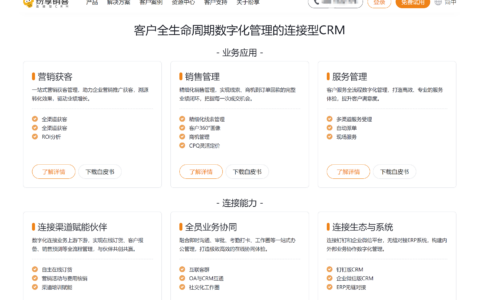
Block-based coding (also known as visual coding or block programming) differs from text-based programming in several key aspects which are: 1) Accessibility, 2) Ease of Use, 3) Engagement, 4) Error Prevention. For instance, one standout difference is Ease of Use. Block-based coding utilizes a drag-and-drop interface made up of colorful blocks that represent code syntax and structure. This design allows young learners and beginners to explore coding concepts and logic without the intimidation or complexity of traditional syntax.
Block-based programming environments, such as Scratch, help users focus on the fundamentals of programming like loops, conditional statements, and variables, without worrying about the detailed nuances of a programming language's syntax. In contrast, text-based programming requires knowledge of specific syntax and rules, which can present a greater initial learning curve and often involves dealing with more errors due to typos or incorrect syntax use.
I. INTRODUCTION TO BLOCK-BASED CODING
Block-based coding simplifies the syntax of traditional programming languages into visually appealing, interlocking blocks. Beginning coders, particularly children, find this approach more approachable as it reduces the cognitive load associated with remembering and applying complex syntactical rules. Instead, users can concentrate on the logic and structure of the code.
II. CHARACTERISTICS OF BLOCK-BASED CODING
The chief characteristics of block-based coding stem from its design and target audience. It places a strong emphasis on intuitive learning, with a reduction of text-based errors due to predefined blocks that snap together, effectively teaching the concepts of coding in a more confined but user-friendly environment.
III. TEXT-BASED PROGRAMMING FUNDAMENTALS
In contrast to block-based coding, text-based programming necessitates a comprehensive understanding of the given language's grammar and vocabulary. Programmers must write every instruction manually, heralding an ability to produce complex, detailed, and fine-tuned code. This traditional form of coding is often seen as more professional and is used to develop commercial software.
IV. TRANSITION FROM BLOCK TO TEXT-BASED CODING
Many educational systems advocate a progression from block-based to text-based programming to scaffold learning and build a solid foundation of coding principles. This transition is critical in nurturing a deep understanding of programming that can be applied to a variety of text-based languages.
V. BENEFITS AND DRAWBACKS OF EACH APPROACH
Both block-based and text-based coding have their advantages. Block-based coding's accessible nature makes it an excellent introduction to computational thinking, while text-based programming’s detail-oriented approach is necessary for professional software development. It’s important to assess the needs and goals of the learner to determine the best approach.
VI. THE ROLE OF BLOCK-BASED CODING IN EDUCATION
Educational systems around the world have incorporated block-based coding into their curriculum to introduce students to the world of coding. The gamified nature of block coding not only makes learning to code fun but also accessible to a broad age range. It works as a steppingstone to the more traditional text-based programming.
VII. CONCLUSION AND FUTURE IMPLICATIONS
While block-based coding provides a robust platform for beginners to dive into the world of programming, it is just the first step towards mastering the art of software development. As technology evolves, the line between both forms of coding might blur, with more sophisticated tools bridging the gap between ease of learning and professional coding requirements.
Understanding the distinctive features and intended use cases for block-based and text-based coding is essential. By knowing when and how to integrate each, educators and learners can effectively develop programming skills that are suited to a range of applications in the fast-paced world of technology.
相关问答FAQs:
1. 积木编程和文本编程有何区别?
积木编程(也称为图形化编程)和文本编程是两种不同的编程方法。积木编程使用图形化的积木块来表示不同的编程指令,并通过将这些积木块连在一起来创建程序。而文本编程则使用编程语言中的文本代码(例如Python、Java等)进行编程。
区别在于,积木编程更加直观和易于理解,特别适合初学者和儿童学习编程。通过将积木块拼接在一起,学习者可以构建出各种有趣的程序,如动画、游戏等。另一方面,文本编程更加灵活和强大,可以处理更复杂的编程任务和算法。
2. 积木编程和编程语言有何不同?
积木编程是一种特殊的编程方式,使用图形化的积木块代替繁琐的代码进行编程。它被设计用于教育和初学者学习编程概念和逻辑思维。常见的积木编程工具包括Scratch、Blockly等。
而编程语言是用于编写计算机程序的一种工具。它们由一系列的语法规则组成,用于描述计算机所需执行的操作。常见的编程语言有Python、Java、C++等。
不同之处在于,积木编程更加直观和易于理解,不需要记忆大量的语法规则,适合初学者。而编程语言则更加强大和灵活,可以进行更复杂的编程任务。
3. 积木编程和实际编程有什么联系?
积木编程虽然相对于实际编程更为简化,但它确实有助于培养逻辑思维和编程思维能力,这些能力在实际编程中非常重要。
通过积木编程,学习者可以了解编程的基本概念,如条件语句、循环结构、变量等,并通过构建程序来实现这些概念。这为他们日后学习和使用实际编程语言打下了坚实的基础。
积木编程还可以培养学习者的创造力和解决问题的能力。通过构建各种创意和有趣的程序,他们可以体验到编程的乐趣,从而激发对编程的兴趣。
总之,积木编程虽然与实际编程有一些差异,但它确实是学习编程的一种很好的起点,可以帮助初学者打下坚实的基础,并培养编程思维和创造力。
文章标题:积木编程和编程有什么不同,发布者:worktile,转载请注明出处:https://worktile.com/kb/p/1772036

 微信扫一扫
微信扫一扫  支付宝扫一扫
支付宝扫一扫 



